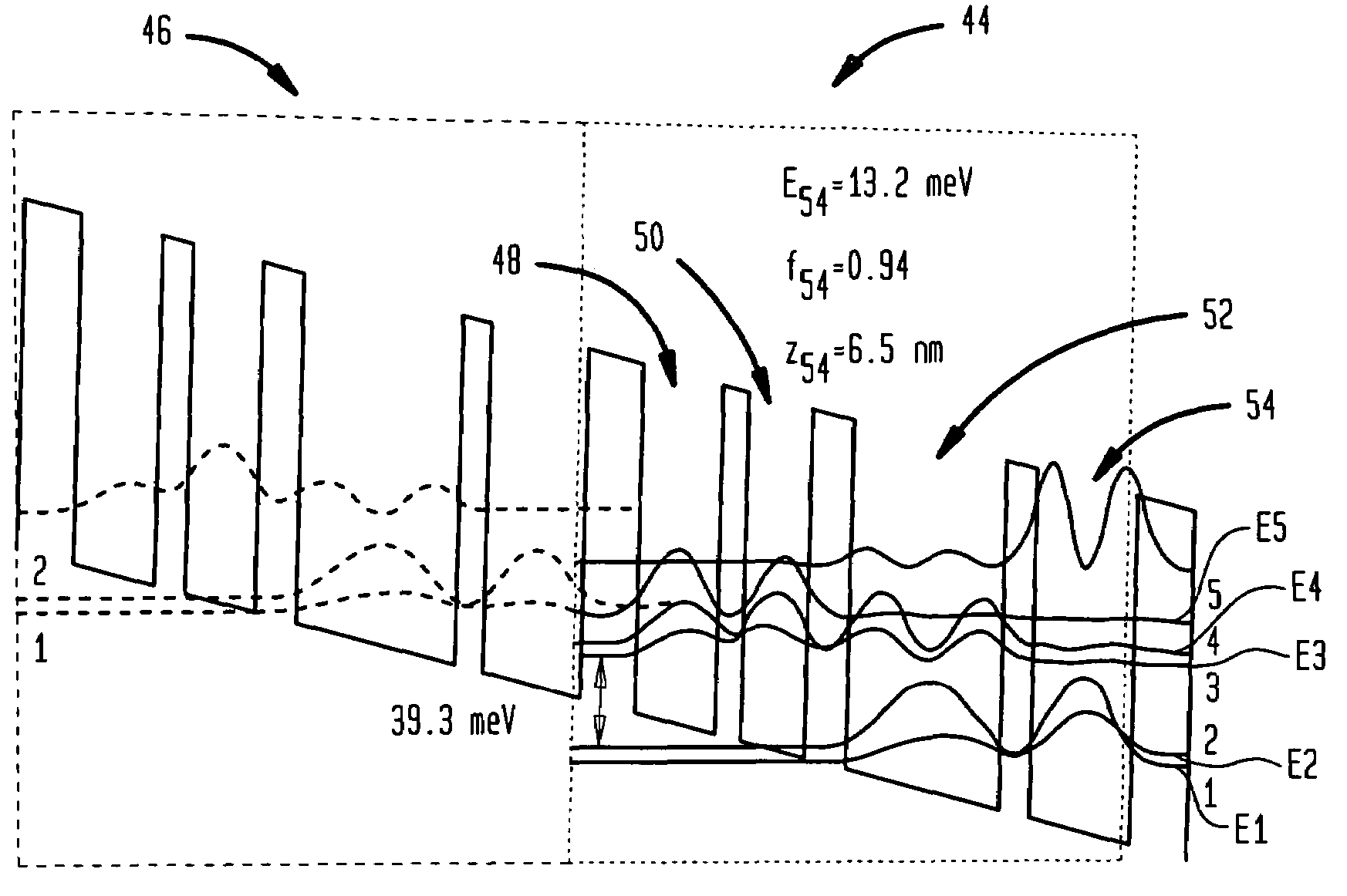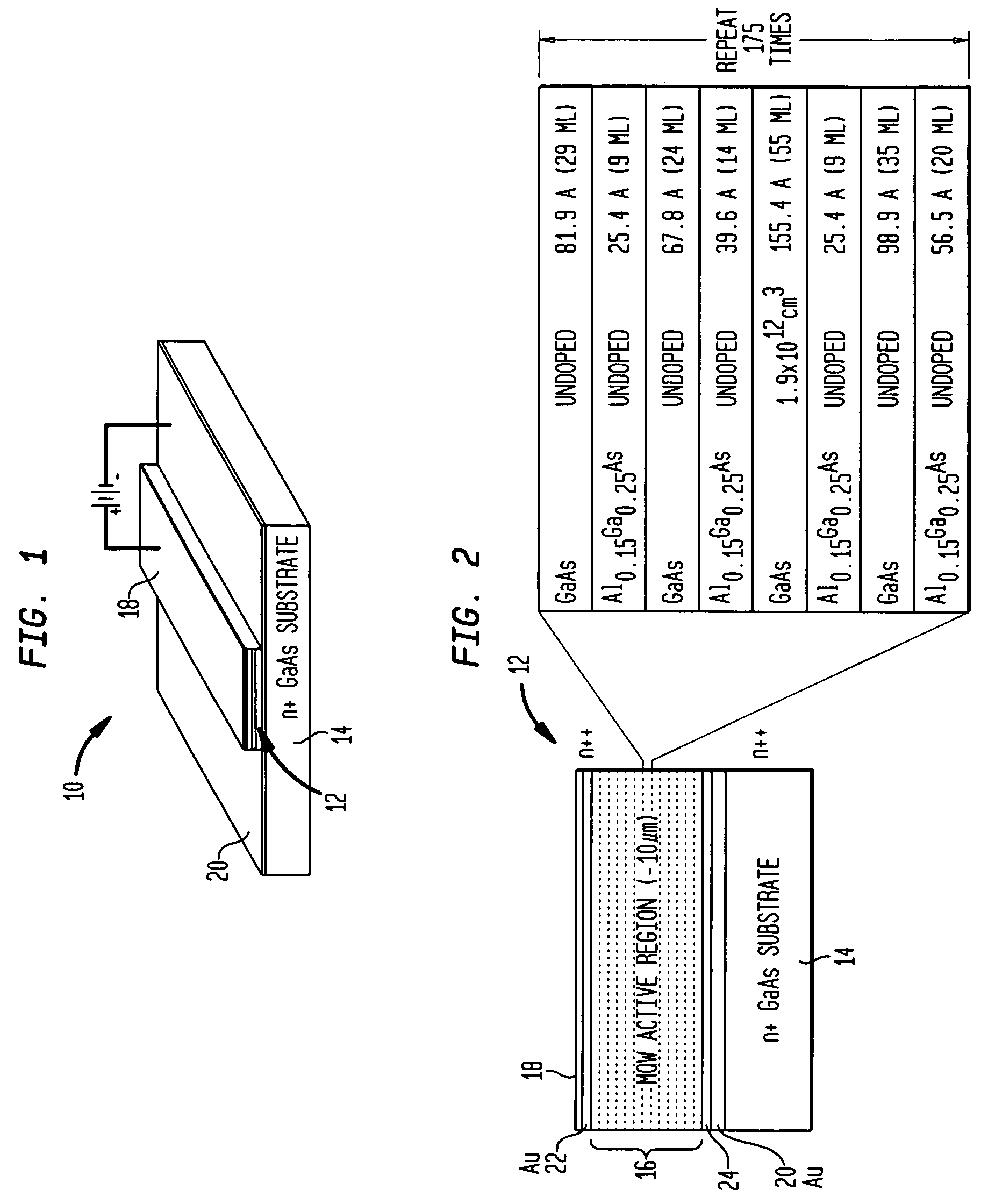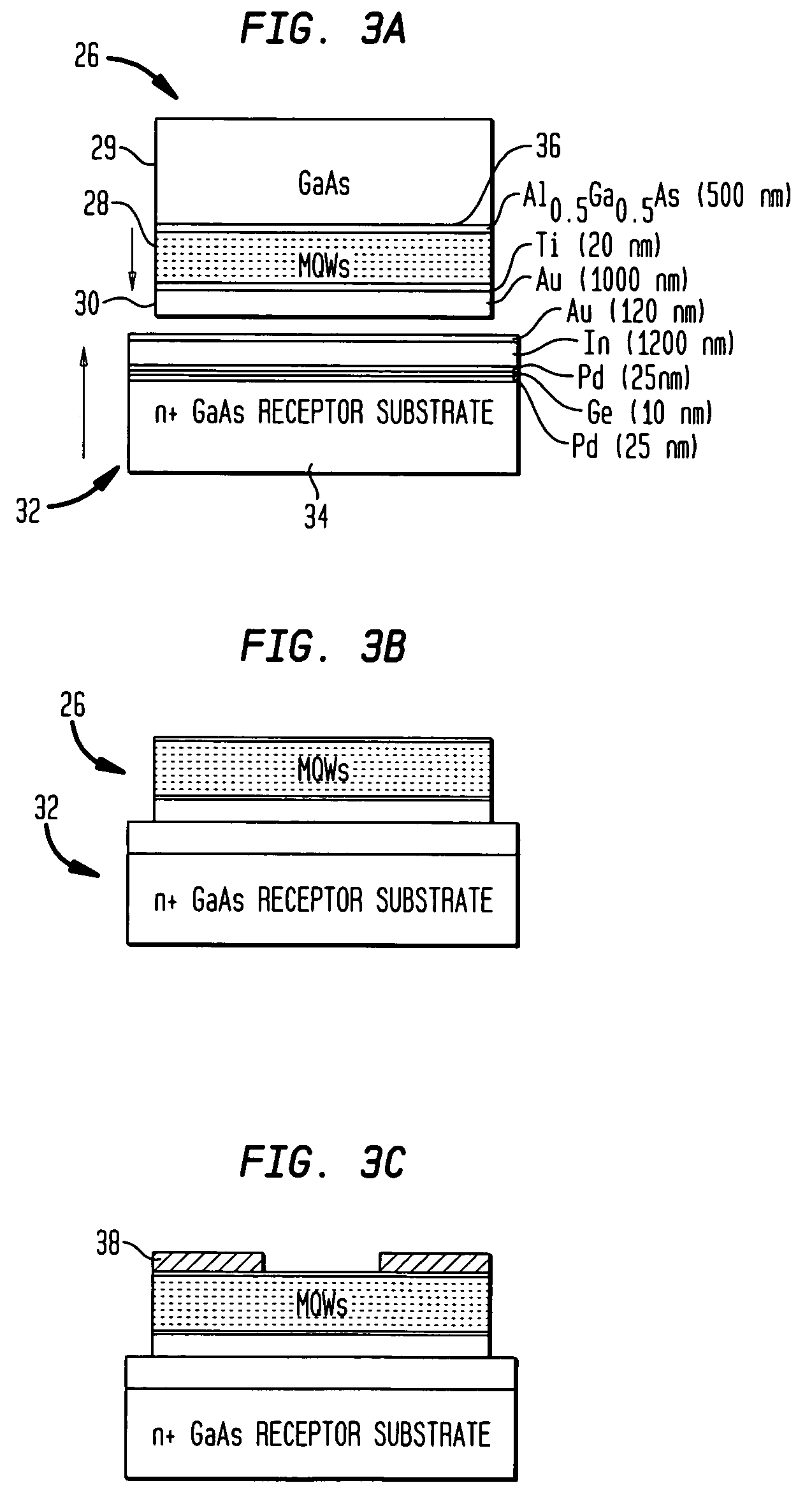Terahertz lasers and amplifiers based on resonant optical phonon scattering to achieve population inversion
a phonon scattering and laser technology, applied in semiconductor lasers, laser details, electrical devices, etc., can solve the problems of inaccessible frequency range below 10 thz by employing conventional semiconductor laser diodes, limited radiation frequencies obtained from photonic or quantum electronic devices such as laser diodes, and limited radiation sources operating in the terahertz region. , to achieve the effect of facilitating population inversion, reducing lasing state, and high selective and very fast depopulation
- Summary
- Abstract
- Description
- Claims
- Application Information
AI Technical Summary
Benefits of technology
Problems solved by technology
Method used
Image
Examples
Embodiment Construction
[0029]With reference to FIGS. 1 and 2, an exemplary quantum cascade laser 10 according to one exemplary embodiment of the invention includes an active lasing region 12 formed as a heterostructure on a GaAs substrate (for example, an n+ GaAs substrate) 14. The active region 12, which can have a thickness in a range of about 3 microns to about 10 microns (in this exemplary embodiment, the active region has a thickness of about 10 microns), includes a plurality of cascaded nominally identical repeat lasing modules 16, which are coupled in series. The number of the lasing modules can range, for example, from about 100 to about 200. In this exemplary embodiment, the number of lasing modules is selected to be 175.
[0030]Each lasing module can be formed as a GaAs / Al0.15Ga0.85As heterostructure. For example, as shown in FIG. 1, in this embodiment, each lasing module, which has an approximate thickness of 600 angstroms, is formed as a stack of alternating Al0.15Ga0.85As and GaAs layers having...
PUM
 Login to View More
Login to View More Abstract
Description
Claims
Application Information
 Login to View More
Login to View More - R&D
- Intellectual Property
- Life Sciences
- Materials
- Tech Scout
- Unparalleled Data Quality
- Higher Quality Content
- 60% Fewer Hallucinations
Browse by: Latest US Patents, China's latest patents, Technical Efficacy Thesaurus, Application Domain, Technology Topic, Popular Technical Reports.
© 2025 PatSnap. All rights reserved.Legal|Privacy policy|Modern Slavery Act Transparency Statement|Sitemap|About US| Contact US: help@patsnap.com



